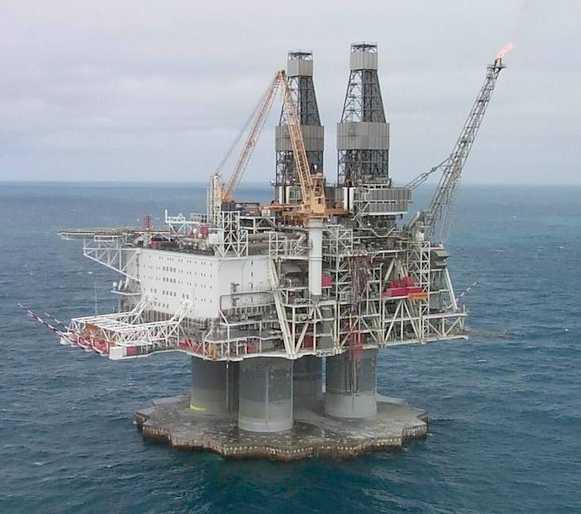Western Energy Alliance, formerly IPAMS, reported that at least half of the non-producing onshore U.S. acreage is the direct result of bureaucratic delays imposed by the Obama administration, not oil and gas companies are refusing to develop lands currently under lease.
The organization has published a top ten list to show how bureaucratic delays are not only preventing more production of domestic oil and natural gas today, but putting at risk tomorrow's production as well, said Kathleen Sgamma, the organization's director of government and public affairs.
While companies are in the long process of satisfying all the requirements necessary to begin production, new federal policies and deliberate bureaucratic delays are preventing American production in the West. Western Energy Alliance estimates that about one-third of leased acreage will not be developed by the current leaseholder with today's technology because exploratory work determines there are insufficient resources and other factors.
Sgamma said that the Obama administration continues to deflect blame for leases that are not producing onto the industry, yet their rhetoric displays a misrepresentation of how oil and natural gas development on federal lands works.
"The truth is that companies are doing all they can to develop federal energy resources, but a lease is not a green light to produce—it's the first step in a long, expensive process that is fraught with bureaucratic red tape and lawsuits by environmental groups determined to stop domestic energy development," noted Sgamma.
"Since development on federal lands takes close to ten years, we know that production today is the result of policies and actions from several years ago," said Sgamma. "Symbolic, punitive measures will do nothing to increase domestic energy supply. What's needed is legislation that provides certainty, clears obstacles, and encourages production."
The top ten ways that the government is preventing production on federal onshore leases includes:
Project Approvals: Whether a small project under fifty wells or a large one with thousands, the Department of the Interior (DOI) is simply not approving oil and natural gas projects. Environmental analysis and project approval must occur before companies can even apply for drilling permits. Normally, this process can take over seven years, but companies are currently experiencing indefinite delays.
EPA Overreach: Recent EPA [Environmental Protection Agency] expansion imposes excessive, redundant regulatory burdens on oil and natural gas production and introduces high levels of uncertainty. EPA has directly prevented project approvals in the West. EPA overreach is having a chilling effect on energy production, diverting precious time and resources away from energy development and into non-productive regulatory activities.
Permitting: Companies are not getting permits to drill in a timely fashion. The Bureau of Land Management (BLM) conservatively estimates a 206 day average processing time for permits. Depending on the field office, permits can take over 500 days. Companies cannot start to produce without a permit.
Reduced Leasing: Often producers conduct exploratory work on leases and determine that nearby areas have the right geology for energy production. DOI frequently defers and delays these offset leases needed to develop the existing leasehold. New policies in 2010 added three additional layers of analysis and regulation, on top of the existing five. These bureaucratic delays have led to anemic lease sales, canceled sales, and indefinite deferrals. Delays in obtaining offset leases prevent production on existing leaseholds.
Unissued Leases: DOI continues to hold millions of dollars in unissued leases, despite statutory requirements to issue leases within sixty days of receipt of payment from successful bidders. Unissued leases can hold up production on adjacent existing leasehold.
Stipulations: DOI has cleared much of the backlog of unissued leases in Wyoming, but in many cases has added more restrictions that were not specified at the time of sale. These new restrictions, such as even preventing development from the surface, reduce the value of leases and may render them uneconomic to develop.
Withdrawal of Leases: One of the first things Secretary Salazar did after taking office was to withdraw 77 leases in Utah. That has been followed by the intent to cancel existing leases in the Wyoming Range, after the government had already completed the leasing contracts. Existing, adjacent leases are affected.
Wild Lands: New policies for wild lands mean that DOI can unilaterally determine that an area is suitable for wilderness protection, and delay for years any development while they reinventory the lands and update land use plans. In the meantime, DOI treats these areas as de facto wilderness, despite lacking legal authority, which prevents production on many existing leases.
Climate Change Challenge: Environmental lawsuits have caused DOI to delay leases in Montana while additional environmental analysis and climate change study is done. Rather than settling these lawsuits as in the past, DOI should stand by its analysis that showed no significant impact to climate change from leasing in Montana.
Ad Hoc Requirements: BLM field offices are arbitrarily adding new requirements to permits, and requiring producers to conduct new and redundant analysis without a basis in law. These arbitrary delays in the field are another means of "death by a thousand cuts" that prevent energy production, job creation, and economic development.





































